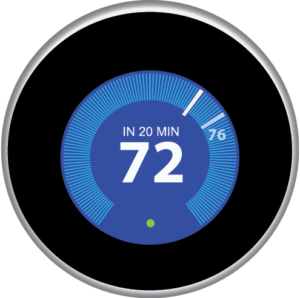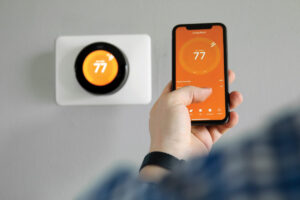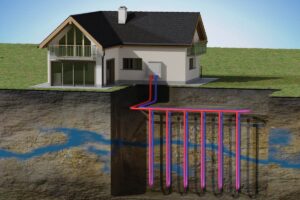 A basic nonprogrammable thermostat is nothing more than a temperature controlled switch that does two things – turns your heating or cooling systems “on” and “off” to maintain a specific temperature of your home. That’s it! Everything else beyond that are options that can make your home more comfortable, efficient and convenient for the user. You could call it your HVAC human interface.
A basic nonprogrammable thermostat is nothing more than a temperature controlled switch that does two things – turns your heating or cooling systems “on” and “off” to maintain a specific temperature of your home. That’s it! Everything else beyond that are options that can make your home more comfortable, efficient and convenient for the user. You could call it your HVAC human interface.
If you are interested in upgrading your thermostat, possibly with a “smart” one, this article will give you an overview of the different types available to help with the decision making process in this exploding market. Before making your final purchase, I would highly recommend consulting with your HVAC professional to make sure the thermostat you select is compatible with your system.
Currently, there are four categories of thermostats: nonprogrammable, programmable, connected and smart. Mostly I will be discussing the differences between the connected and smart thermostats.
Nonprogrammable thermostats are the most basic temperature controlling devices on the market and have been around for many years.
Programmable thermostats allow you to program a temperature schedule for different dates and times. Historically, they have been a bit complicated and are not user-friendly.
Connected thermostats means it can connect to the Internet. You can make changes from your smart phone or computer, but it does not make any decisions for you. Programming is easier from your smart phone or computer than from the screen on the thermostat. It also allows you to track your energy usage so you can reduce your inefficient behaviors. For those constantly on the go, having remote access to your HVAC control center at all times gives you piece of mind. It can even notify you if the temperature has fallen below a predetermined setpoint.
Smart thermostats can also connect to the Internet, but they can also make decisions based on information they receive from your personal preferences such as real-time outside conditions at your home, occupancy and many other optional inputs. They can do everything I have mentioned and much more. With additional equipment, it can control the humidifier, dehumidifier, exhaust fans, lighting, your front door and can tie into your home’s security system or Smart Home system.
Still under the category of smart thermostats are learning thermostats. You may have heard of the Nest thermostat. It’s one of the first smart learning thermostats to hit the market. Ecobee smart thermostat and the Honeywell Prestige series of thermostats are a few others that have the learning features which allow it to auto-program itself based on your habits. After a week or so, a learning thermostat learns your family’s routine by using motion sensing technology to adjust the temperature to reduce your energy usage.
Learning thermostats are for people that would like to have some of the high-tech features a smart thermostat offers, but are not tech-savvy enough or don’t have the time to commit to learning about another system. Pretty cool!

The geo fencing option is available on some connected and smart thermostats. This option tracks your cell phone and when you are getting close to home it will bring the temperature up or down automatically. No programming is required. The drawback with geo fencing is it only works for those cell phones the system recognizes. Sorry kids.
The bottom line with any thermostat, other than the basic model, is if you do not plan to utilize the technology that is available to make your home more comfortable and efficient, don’t bother making the investment. It will not save you any money.
The “smart stat” market is going to continue to evolve and will be more integrated into the whole-home to control other systems. I believe there is solid value in this technology and it will only get better with time.









